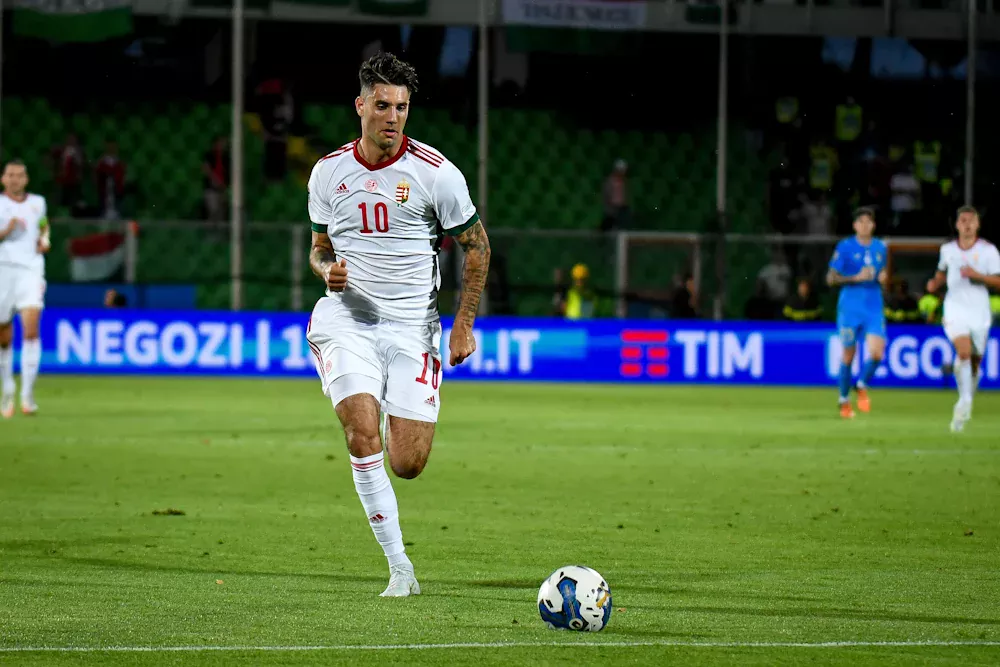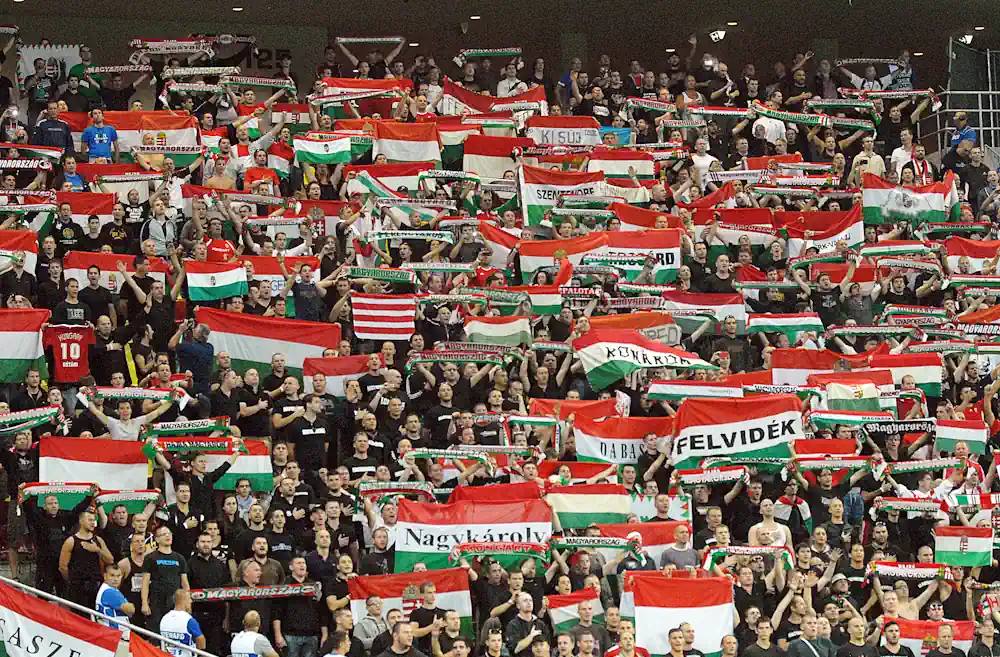Hungary, the magnificent Magyars
The new generations (and perhaps not so new), when hearing about Hungary at a football level, possibly think of Dominik Szoboszlai, the Liverpool star and there really is no other great recent football reference from that country. However, this was not always the case. In fact, in the 50s, to talk about Hungary was to talk about a fearsome team with world-class players.
©
Dominik Szoboszlai, Hungary's biggest star today - @Ettoregriffoni - Dreamstime.com
Gusztav Sebes
Gusztav Scharenpeck, better known as Gusztav Sebes, was born in Budapest, when it was still part of the Austro-Hungarian empire, on January 22, 1906. From a very young age he began playing football, an activity that he combined with some other work. He spent four years in France where he worked as an assembler for Renault, at the Boulogne-Billancourt headquarters. In fact, on French soil, he continued playing football and did so for Olympique Billancourt.He would then return to Hungary to play for Hungaria FC, where he would remain for 13 years and win three leagues and a cup. Once he retired from football as a player, he decided to become a coach, passing through several clubs between 1940 and 1946, such as Csepeli WMFC or Budafoki MTE. In 1947, he would take over as head coach of the Hungary national football team, ushering in a glorious era for the nation on a sporting level.
László Kubala
The Hungarian legend László Kubala, born in Budapest, had Slovak and Polish ancestors, which influenced him to sign for Slovan Bratislava at just 19 years old, when he was one of the main figures in the Hungarian league with Ferencváros. However, her main reason for leaving her country was to avoid military service. While on the Bratislava team, he was called up by the Czechoslovakia national football team which was managed by his wife's brother.Only a couple of years later, in 1948 he would return to Hungary, signing for Vasas, where he once again stood out significantly in the local league, which caught the attention of Sebes who decided to include him in his first call-ups for the Hungarian team. Kubala managed to play a few games with the national team of his country of birth, however, after the Soviet invasion of Hungary in January 1949, he chose to leave the country as a refugee, first to the United States and then to Italy, where he would play for Pro Patria.
Kubala's talent was such that Torino, that Il Grande Torino of the late 1940s, invited him to play with the team in a tribute match in Lisbon against Benfica. The Hungarian could not travel with the Turin team because his son was ill and this prevented Kubala from being on the flight that crashed in Superga, where the entire Torino FC team would die. Later, Kubala would sign with FC Barcelona, where he became a legend and which led him to play with the Spain national team.

©
Hungarian fans of today - @Cosmin Iftode - Dreamstime.com
Golden team
Unlike Kubala, who managed to leave the country after the total Soviet ban on departure of Hungarian athletes was imposed, Gyula Lorant, another of the many Hungarian talents of the time, did not have the same luck. In his case, he was caught by the dictatorship and entered a detention camp from which he managed to escape thanks to the intervention of Sebes, who guaranteed Janos Kadar, Hungarian Prime Minister at that time that Lorant would not try to leave the country again and that would bring joy for sporting successes.These types of actions made Sebes earn the trust of his players, something that was very important having stars like Ferenc Puskas, Sandor Kocsis, Nandor Hidegkuti or Zoltan Czibor. Sebes also took advantage of the fact that all the players were playing in Hungary due to the Soviet ban, to do regular training sessions with his players and in this way improve his tactics.
Sebes implemented a variation of the WM tactic that was popular at the time, which could be represented as a 3-2-3-2 (or an MM, depending on how you look at it), a tactic that had enormous offensive potential as they would later demonstrate in international scenarios. Likewise, the Hungarian coach took things from the Wunderteam (Austria national team of the 1930s), where all the players had defensive and offensive responsibilities, something that had an enormous influence on what would be known as Total Football that Rinus Michels would popularize with his Ajax and with Netherlands.
After being defeated in 1949 by Czechoslovakia, Hungary began a streak that would end in 1956, where they would play 54 games and only have one defeat (a very painful one, by the way). In the middle of the last century, football at the Olympics was still a major tournament and Hungary took the gold medal at the 1952 Summer Olympics. But he not only won it, but he did it forcefully since he won his 5 games with a total of 20 goals in favor and only two against, beating teams like Italy or Yugoslavia.
The success surprised the vast majority of the world, including many within Hungary itself, who did not expect to have such a demonstration of superiority on such an important international stage and this, with the 1954 FIFA World Cup on the horizon. The Golden Team was doing preparation matches prior to the World Cup where they crushed almost all the rivals they encountered along the way. Here the so-called Match of the Century stands out.
That match, which was played in November 1953, pitted England, inventors of football and considered the best both technically and tactically, against the powerful Hungary. 105,000 spectators watched at Wembley as Sebes' team beat the English team 6-3 with astonishing clarity. This was England's first defeat against a rival from outside the British Isles. In May 1954, with some Englishmen eager for revenge, the "revenge" was played, this time, in Budapest. The result was even worse for the British, 7-1.
The 1954 FIFA World Cup finally arrived and Hungary was in the same group as West Germany, Turkey and South Korea, advancing with a record of 17 goals for and 3 against in just 2 games. In the quarterfinals, the Brazil national team was waiting, which had players like Didi or Djalma Santos. The match would end with a 4-2 in favor of the Hungarians and would be known as the Battle of Berne due to the violence with which it was played and the fights that occurred after the match ended.
In the semifinals, Hungary faced Uruguay, which managed to tie the match after the initial 2-0 in favor of the Sebes team. In extra time, two goals from Kocsis gave them a place in the final against West Germany. It is important to remember that Hungary had not lost a game since 1949 and that they had already beaten the German team 8-3 in the group stage. The Wankdorf Stadium in Bern was the scene of the final, in which Hungary was already leading 2-0 after 8 minutes, making it seem like it was going to be a match that the Golden Team was going to win easily.
However, at minute 18, West Germany had already tied the game and in the 84th, Helmut Rahn scored the winning goal to leave the final 3-2, giving Germany its first World Cup and leaving Hungary, one of the best teams of history, without that cherry on the cake that crowned a golden era. In Germany, this match is known as The Miracle of Bern and was the only defeat for the Golden Team in the period 1949-1956.
In 1956, after the Hungarian Revolution broke out, several of the Golden Team's key players took advantage of an opportunity to leave the country so as not to return, and in that same year, Sebes left his position as coach of the national team. In this way, he finished what is one of the best teams in the history of world football.
